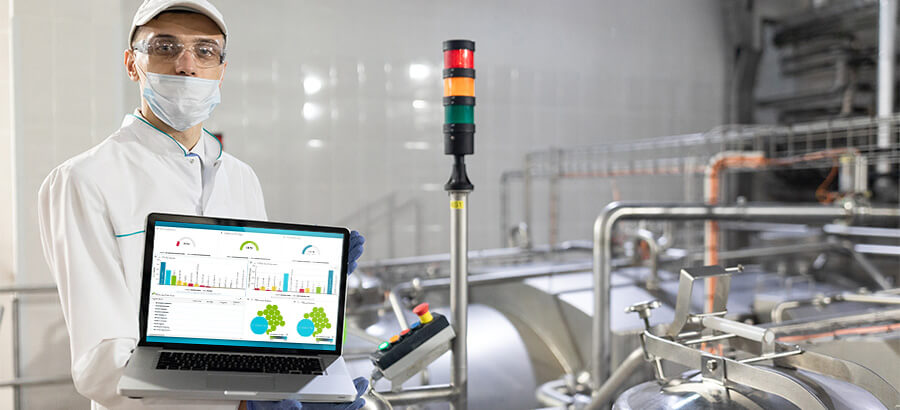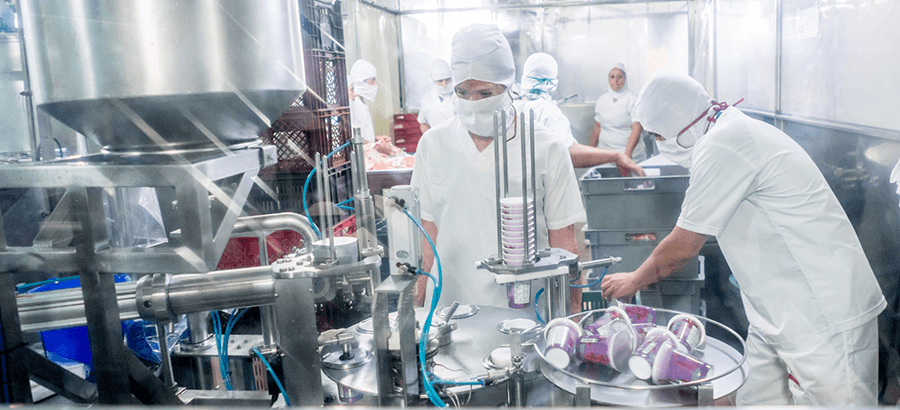The food and beverage industry, much like any other industry, is filled with challenges: maintaining a reliable and high performing labor force, machinery uptime, shipping deadlines, bringing in enough sales, cash flow, packaging and so much more.
Then, you need to factor in external influences, such as:
- Ever-increasing regulations
- Branding – educating consumers around your specific food products
- Rising costs of raw materials
- And, if you export or import, global uncertainty like imposed tariffs, etc.
Today’s food businesses need to ensure that they are positioned both operationally and financially to navigate these challenges. Steve Bassaw’s blog (Converging Robots and ERP to improve decision making) post explains how technology can be used to increase productivity, efficiency and profitability. Software that fully integrates with plant floor hardware enables food processors with greater insights into production which equates to reduced costs and increased productivity.
So, where am I going with all of this? Well, in this blog, I’d like to get into more detail about the software required by manufacturers to enable this transformation. It’s called Enterprise Resource Planning (ERP) software and it allows an organization to collect, store, manage, and interpret data from business activities.
An ERP system is typically a company’s main system of record and home to all the business-critical data from which it reports on key performance metrics. These can include sales, costing, profits, inventory, production, picking, shipping, receiving and much more.
Most food and beverage manufacturers require additional software “add-ons” to their ERP to provide a complete 360-degree view of their operations. There are two approaches ERP vendors take:
- Single Vendor Suite
This is a comprehensive suite of software that links every component across an entire organization using one central database.
- Pros:
- Integrated and consistent processes throughout all modules in the value chain
- You only need to know one system or platform
- Cons:
- You may steer your organization into a technological dead end if your vendor is not using current technologies
- Databases or programs may be out-dated and ineffective
- Lack in-depth detailed features and functionality within specific modules
- The rate of innovation is typically slower because of limited development resources and a broader focus
- Best of Breed ERP Solution
Often called B.O.B., a Best of Breed solution is a combination of tightly-integrated leading products or software tools in a particular market segment such as meat processing. B.O.B. focuses on providing the best features and functions for each component throughout the entire value chain.
- Pros:
- You can choose the products with the best features and functions right for you
- You get to have the best possible type of product in each department
- More flexibility to substitute individual elements
- Vendors and software involved are more specialized to your industry
- It’s easier to replace one component in the system when needed, decreasing risk
- Cons:
- Different user interfaces for every B.O.B. product
- It can be more difficult to troubleshoot problems because of the number of products in play. Your reseller would typically be your first line of support to mitigate this
- End user training could be more complex
While each approach has its merits, the best overall experience and results for your dollar is a B.O.B solution because of the depth of expertise and functionality inherently found in each component.
Integration and Communication – the Key to Success
The key to success is to choose an ERP vendor that has tight partnerships with other B.O.B. vendors and that the integration is seamless. This ensures data flows naturally throughout the solution in real-time and is ready to be leveraged when the user needs it.
Often overlooked, but shouldn’t be, is the integration and communication of data to and from the hardware as this contributes to huge gains in efficiency. Today’s scales, label printers and other plant floor devices are becoming more and more intelligent. Software can interface directly with the hardware to send important data, like production scheduling, down to the plant floor or making sure the right product files are configured on the weighing and labelling equipment. This data integration enables you to save time and remove errors and costs associated with traditional manual data collection.
The best part? No more clipboards!







